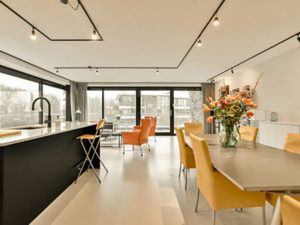
Choosing the right flooring for your kitchen is a major design and functionality decision. With its warmth and timeless appeal, wood flooring is a popular option—but is it a practical choice for the kitchen? In this guide on Wood Flooring for Kitchens: What You Need to Know, we’ll explore the benefits, concerns, and tips to make wood floors work beautifully in this high-traffic, high-moisture space.
One of the biggest advantages of wood flooring in kitchens is its natural beauty. Whether you prefer the classic grain of oak or the lighter tones of maple, wood adds character and comfort underfoot. It creates a seamless flow between kitchen and adjoining rooms, especially in open-concept homes. Many homeowners find that wood makes the kitchen feel more inviting and cohesive with the rest of the living space.
However, it’s important to consider the challenges. Kitchens are prone to spills, humidity, and foot traffic—all of which can wear down or damage a wood floor over time. But with the right type of wood and proper maintenance, these concerns can be managed. Engineered hardwood, for example, offers greater resistance to moisture and warping, making it a solid option for kitchen use.
Regular maintenance is key. Wipe up spills quickly, use rugs in high-traffic areas, and avoid harsh cleaners that can strip the finish. Reapplying a protective coating every few years can also extend the life of your floor. When cared for properly, wood flooring in the kitchen can last for decades while maintaining its charm and durability.
Another thing to keep in mind is finish type. A matte or satin finish hides scratches and dirt better than high-gloss finishes, which can show every mark. You’ll also want to ensure your subfloor is properly sealed and that moisture barriers are in place to prevent water from seeping underneath the planks.
Wood Flooring for Kitchens: What You Need to Know isn’t just about choosing the right type of wood—it’s also about planning ahead for moisture control and daily use. With the right strategy, wood floors can offer warmth, elegance, and resilience, even in the busiest room of the house.




